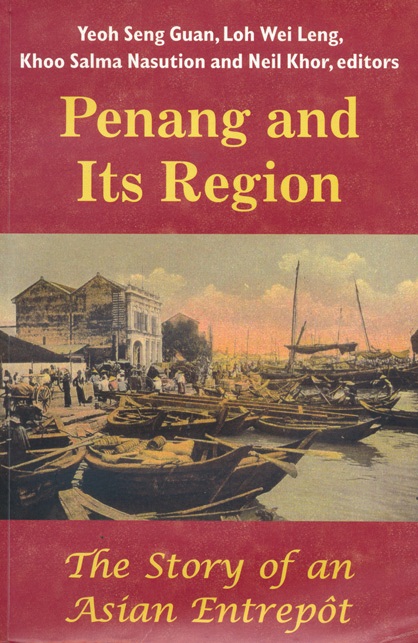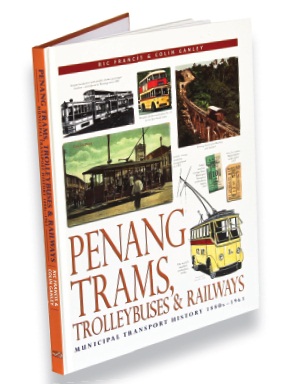Written by Kat Fatland.
George Town is known across Southeast Asia for its rich history, but what is it that makes this city so historically distinct? The answer is: quite a lot. From its fabulous food to its remarkable diversity of cultures, Kat Fatland delves deeper into a city whose past is worth discovering.
Penang and its Region: The Story of an Asian Entrepot

(Yeoh Seng Guan, Loh Wei Leng, Khoo Salma Nasution and Neil Khor, editors. Published 2009, National University of Singapore)
In the late 18th century, Francis Light arranged an agreement with the Sultan of Kedah, previous ruler of Penang, which ceded the little island to the Brits in return for protection and a reasonable sum of money. Light enticed traders from all over Asia and the Middle East to take up residence in Penang, promising them land, safety, and impressive trading opportunities. In no time, the island grew from a sleepy paradise of little more than 300 natives to a bustling port of thousands of traders and sojourners and their ever-growing families. The island was an intersection of dozens of different cultures, who infl uenced each other, and occasionally fought one another.
As expats, the newest generation of world sojourners and settlers, we know the causes of migration to this old trading port. But what, exactly, are the effects of having such diverse cultures all residing on such a small little island? How did Penang rise to being a centre of the region’s trade, and why did it eventually fall from such importance? Penang and its Region: The Story of an Asian Entrepotis a collection of essays that discuss topics ranging from the intersection of cultures and their consequences on trade to the various men who eventually migrated to expand their fortunes. One of the book’s essays discusses the secession movement of Penang, outlining the period of 1948-1951 when Penangites decided there was no place for them in the more homogenously populated Federation of Malaya. Another essay discusses the legacy of Eu Yan Sang, the man behind the ubiquitous chain of Chinese medicine shops found all over Malaysia, who brought his business to Penang after inheriting it as a young man from his father.
Essayists include prominent professor Khoo Kay Kim of the University of Malaya and historians Abdur Razzaq Lubis as well as C.M. Turnbull. The book offers its readers a closer look into the colourful history of a small island that played a major role in the making of history.
Penang Trams, Trolleybuses and Railways

(Ric Francis and Colin Ganley. Published 2006, reprinted 2013, Areca Books)
Public transport in Penang is, to put it lightly, not quite ideal. Buses rarely abide by a time schedule and are generally packed to the brim, with little to hang onto except the person beside you. With the chaotic roads of today’s Penang, it may be diffi cult for some of us to imagine a time when Penang offered its residents a suitable system of transport. But back in the nineteenth and twentieth centuries, Penang’s transport system was not only efficient, it was state of the art. Penang Trams, Trolleybuses and Railways, the culmination of over fi ve years of research by two transportation enthusiasts, explains the rise and fall of the golden years of transport in full detail, focusing on the years between 1880 and 1963.
Source: Penang International August/September 2013
Read more:
- 5 Books to Read Whilst Travelling in South East Asia
- 5 Mouth Watering Malaysian Cook-Books
- 5 Fantastic Books for Your Stay in Malaysia
What are your thoughts on this article? Let us know by commenting below.No registration needed.
"ExpatGo welcomes and encourages comments, input, and divergent opinions. However, we kindly request that you use suitable language in your comments, and refrain from any sort of personal attack, hate speech, or disparaging rhetoric. Comments not in line with this are subject to removal from the site. "


















